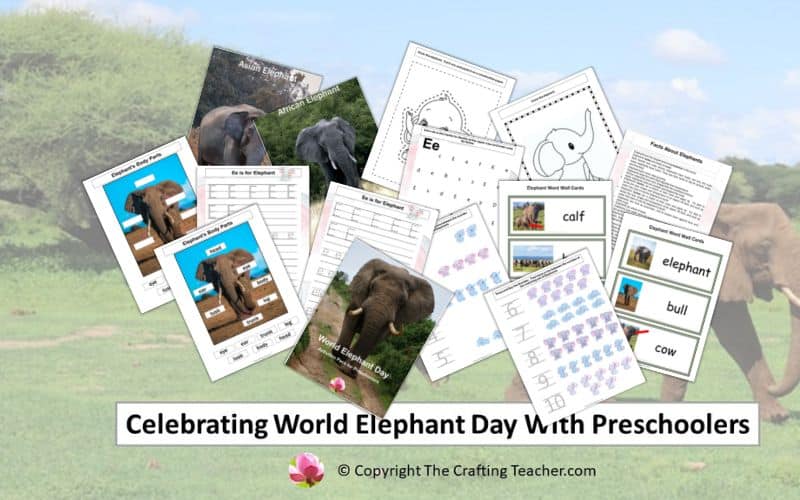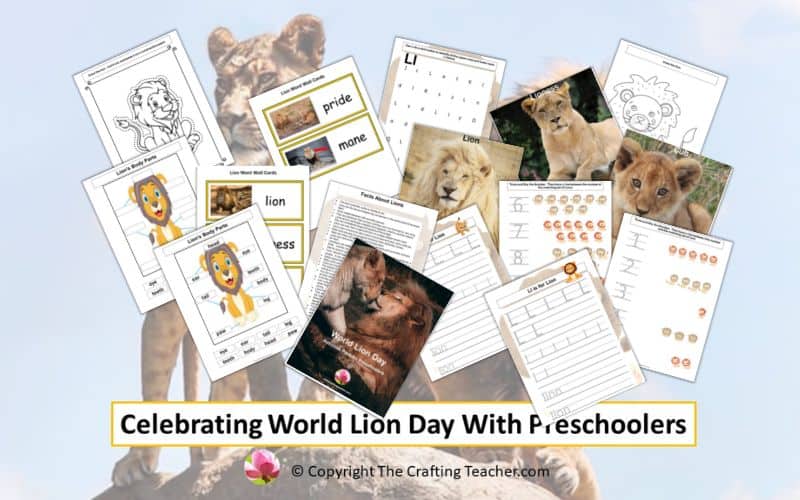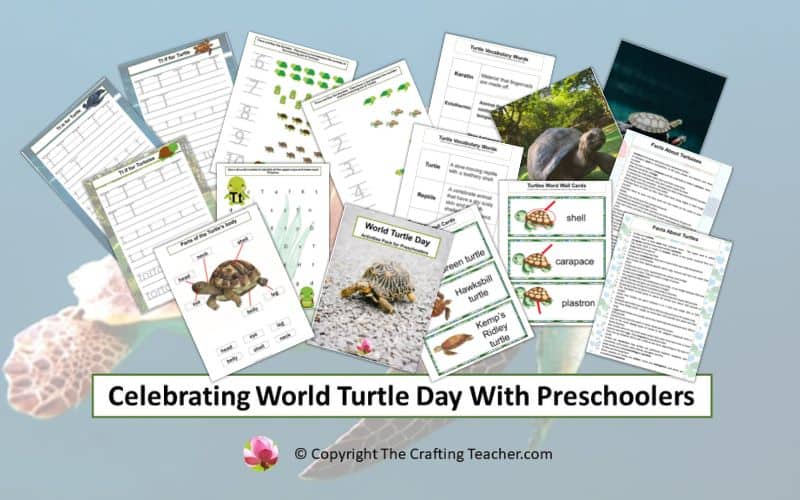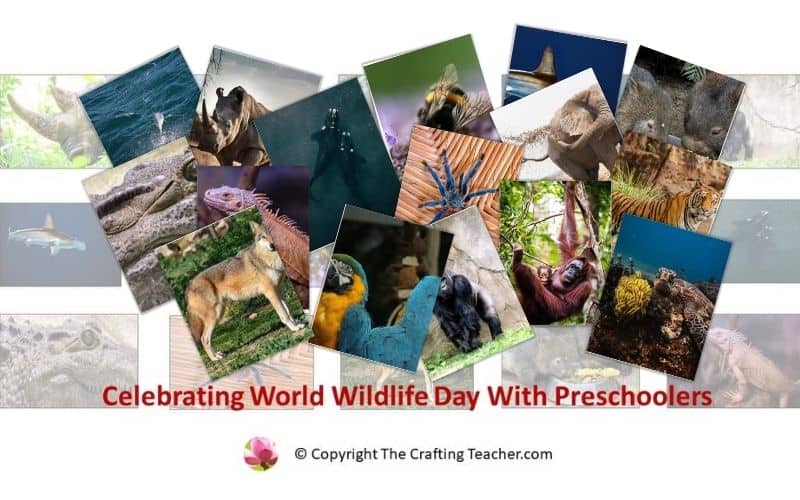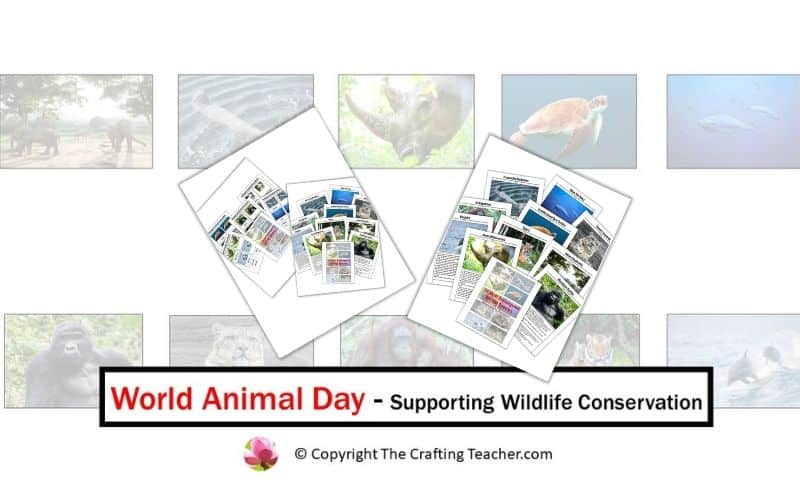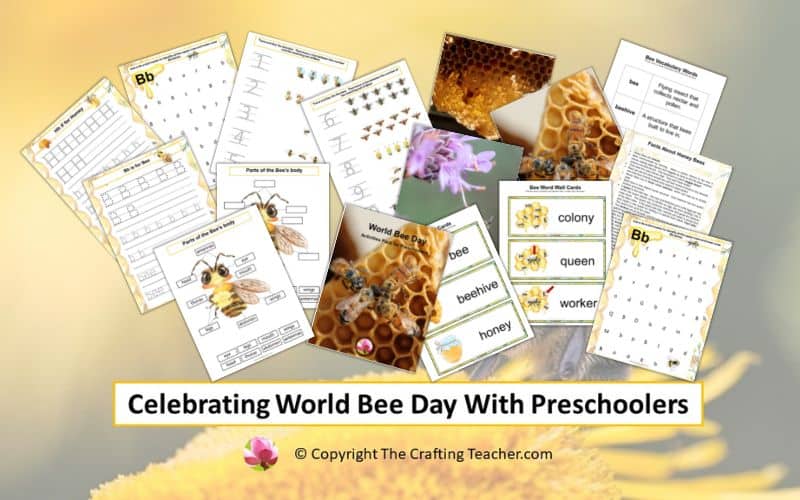Celebrating World Elephant Day With Preschoolers
Affiliate Disclosure: “This post contains affiliate links, which means I receive a small commission, at no extra cost to you, if you make a purchase using those links.”
The World Elephant Day is August 12. This day was created to raise awareness of the increasing danger of extinction that elephants are facing, and to encourage the World to work together to support the conservation effort of the organizations that are working hard to protect these magnificent animals, improving enforcement policies to prevent the illegal poaching, preserve the elephant habitats, get the captive elephants to be a better treat, and reintroduce elephants that have been capture into protected sanctuaries.
We have seen improvement in certain areas, thanks to some organizations’ efforts. A good example is the WWF which reported that “About 30 years ago, WWF helped build a platform on the edge of the Dzanga bai that allows researchers to observe the elephants and other wildlife daily. More than 3,000 individual elephants have been recorded at the bai over the past three decades. The number of individual elephants in the bai was high for a few weeks in April and May, with a single day in May breaking the record of the most elephants seen in the bai at the same time: 195.”
Regardless of these efforts, elephants are running out of time, and before we know it, they will be gone forever, unless we all, together, do something about it to stop the demand for and poaching to collect ivory (their tusks), stop exploiting and mistreating them, and designate protected habitats where they can live in peace and thrive.
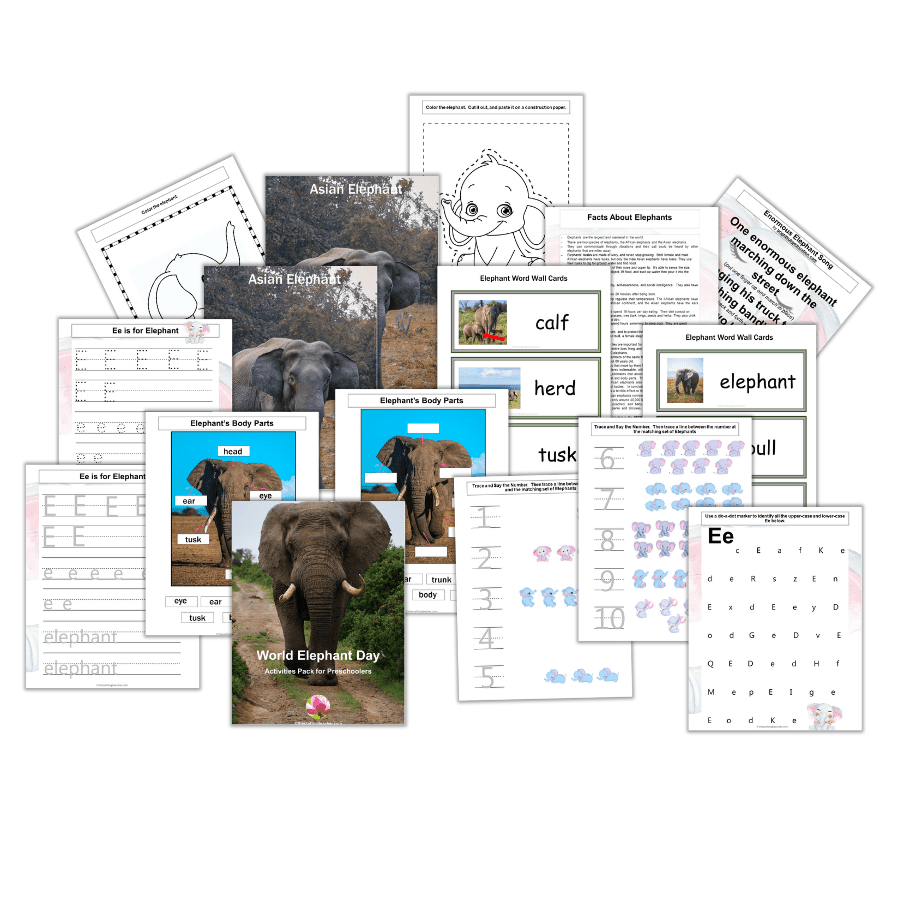
In the end, you will find a free World Elephant Day pack, as my gift to you for taking your time and reading this post. It includes 15 pages of Literacy, Science, Math, and Fine Motor activities for your preschoolers.
History of the World Elephant Day
World Elephant Day was started on August 12, 2012, by Canadian Patricia Sims in cooperation with the Elephant Reintroduction Foundation of Thailand. This movement inspired the creation of 100 other partnerships and has reached thousands of people across the globe that have shown their concern and are trying to help.
In November 2015, Patricia Sims founded the World Elephant Society, a nonprofit organization whose mission is to create and disseminate to the public educational information about elephant conservation worldwide for free, using a variety of platforms, educational curricula using teacher’s guides, and support the annual World Elephant Day campaign.
This global and powerful voice helps people in general, policy-makers, and governments create ways to look for and support the efforts that conservationists do, and look for solutions and create policies to protect elephants and other wildlife and their habitats, to avoid their extinction and allow future generations to enjoy.
You can find more information about the World Elephant Society and its programs by contacting worldelephantday.org.
Facts About Elephants
- Elephants are the largest land mammal in the world.
- There are two species of elephants, the African elephants, and the Asian elephants.
- They can communicate through vibrations and their call could be heard by other elephants that are miles away.
- Elephants’ tusks are made of ivory, and never stop growing. Both female and male African elephants have tusks, but only male Asian elephants have tusks. They use their tusks to dig for groundwater and find food.
- Elephants’ trunks are a fusion of their nose and upper lip. It’s able to sense the size, shape, and temperature of an object, lift food, suck up water then pour it into the elephant’s mouth.
- They have thick skin.
- Elephants demonstrate empathy, self-awareness, and social intelligence. They also have great memories.
- Baby elephants can stand within 20 minutes after being born.
- Elephants’ large thin ears help regulate their temperature. The African elephants have bigger ears shaped like the African continent, and the Asian elephants have ears shaped like Asia.
- Elephants are herbivores and spend 16 hours per day eating. Their diet consists of bamboo, fruits, leaves, roots, grasses, tree bark, twigs, seeds, and herbs. They also drink a lot of water, about 200 liters a day.
- Elephants love water and will spend hours swimming to keep cool. They are great swimmers and can float.
- Elephants use mud as sunscreen and protect them against ticks and other bugs.
- An adult male elephant is called a bull, a female elephant is called a cow, and a juvenile elephant is called a calf.
- Close relationships and family ties are important for elephants.
- Female elephants spend their entire lives living and traveling in large groups called herds that range in size from 8 to 100 elephants.
- The elephants in a herd are members of the same family, and the oldest cow is the leader.
- Most elephants can live to about 60 years old.
- Elephants are startled by things that move by them fast like bees, mice, and cheetahs.
- The African elephant is considered vulnerable, with only 400,000 left in the wild, and the African Wildlife Foundation estimates that around 35,000 African elephants are killed every year for their tusks, meat, and body parts. The primary target is the bulls for their bigger tusks. Female African elephants also are killed for their tusks, leaving an incredible amount of orphaned babies. In conclusion, more African elephants are killed than are being born, which has a terrible effect on the stability of elephant families.
- According to WWF reports, Asian elephant numbers have dropped at least 50% over the last three generations, leaving only around 40,000 left in the wild, and now are considered endangered. They are also poached, and baby elephants are captured to be sold, trained, traded, and used in parks and circuses, being abused and lacking adequate veterinarian care.
- Both types of elephants are included in the IUCN Red List of threatened species, and some experts think that they are going to be extinct in twelve years if nothing is done to protect them.
How to celebrate World Elephant Day
Here are some ideas on how to celebrate World Elephant Day:
- Create a lesson plan to teach your preschoolers about elephants and their importance in a balanced ecosystem, and imprint in them the love for these magnificent mammals, so they become their defenders.
- Invite your families to watch the “Return to the Forest” documentary. This film was released on the first World Elephant Day and talks about the reintroduction of captive Asian elephants to the wild. The sequence, “When Elephants Were Young“, talks about the life of a young man and an elephant in Thailand.
- Use your social media platform to share the World Elephant Day, and invite your families to do the same.
- Organize a fundraiser at your school or among your friends to donate to any organization protecting these animals, or make a symbolic African elephant adoption, to support WWF’s efforts to avoid their extinction.
- Invite your preschoolers to dress as elephants or with elephant-inspired clothes on World Elephant Day, and have a parade around the school or your neighborhood.
- Organize a field trip to your local zoo to observe the elephants, or invite your families to go on their own and do the same.
- Sing songs about elephants, such as The Enormous Elephant Song, by brighthubgeducation.com, Mr. Fun Elephant, and Elephants Have Wrinkles, and have your preschoolers act out the actions while you sing.
The Enormous Elephant Song
One enormous elephant marching down the street (put one finger up and march in place)
Swinging his truck to the marching band’s beat (swing your arm back and forth while marching in place)
He had two big ears and four big feet (hold your ears and stomp your feet)
Swinging his trunk to the marching band’s beat (swing your arm back and forth and march in place)
(Repeat with more elephants)
- Have your preschoolers do elephant-related crafts. These are some cute suggestions: Carboard Tube Elephant craft by creativefamilyfun.net, Elephant Paper Puppet by Ruffles & Rainboots, Sponge Paint Elmer The Elephant by byggyandbuddy.com, Handprint Elephant by redtedart.com, E is for Elephant craft from adabofgluewilldo.com,
- Invite your preschoolers to make elephant masks and to move as one. You can find a free template of an elephant mask at itsybitsyfun.com.
- Read a book about elephants and invite your preschoolers to draw their favorite part of the story or character, or create a group story about an elephant to turn into a book for your library.
- Have them transfer water from one container to another using straws, to imitate an elephant’s trunk.
- Show videos to your preschoolers about elephants in their natural habitats. Some good ones you can use are World Elephant Day, Celebrate World Elephant Day, and Elephants for Children: Learn All About Elephants.
Books About Elephants
Read books about elephants to your kiddos, to reinforce your lesson and plant in them the love for and desire to help these amazing creatures, as they get older.
There are many books that address elephants, both fictional and non-fictional. You can find these books at your local library, used book store, and on Amazon. These are my favorite books about elephants. You can get them very easily by just clicking on the pictures, which have my special links embedded in them and will take you directly to their Amazon page.













Pin It For Later
If you are in a rush and don’t have time to read the post and download the printable but want to save it for later, pin it to one of your Pinterest boards.
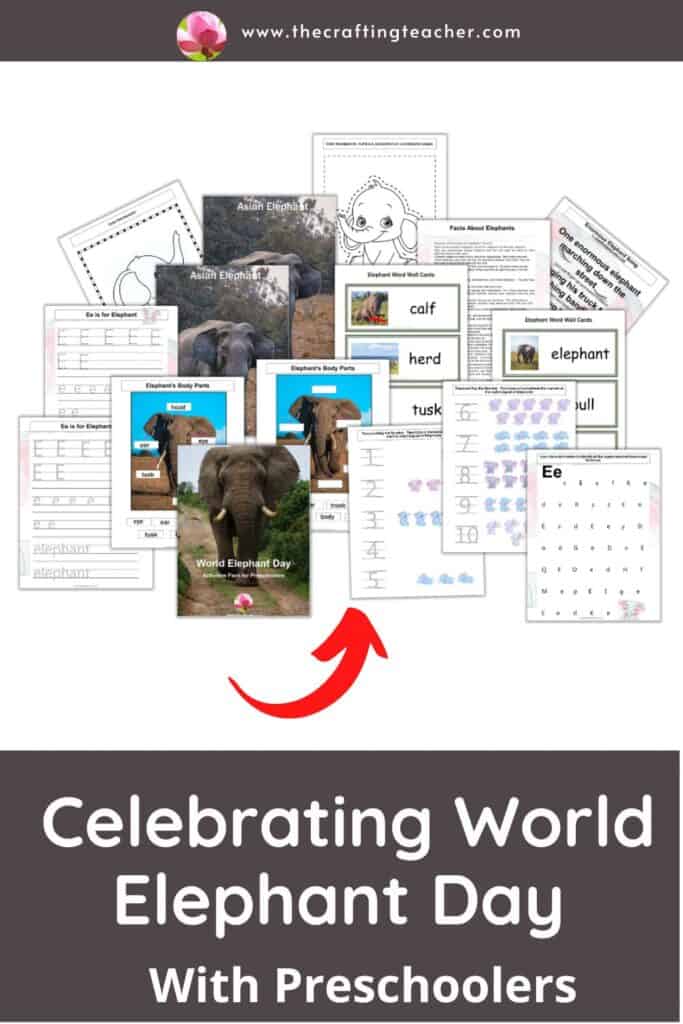
This World Elephant Day make a vow to teach your children all you can about elephants and get your families involved, so they can become protectors and advocates for these amazing mammals, and avoid their extinction.
I hope you enjoy these ideas and help you have fun during the World Elephant Day celebration with your preschoolers. To get the FREE pack, you just have to click on the link below and put your information, for an immediate download.
Be happy, safe, and creative. I wish you well.
Love,

P.D. Please let me know if any of these ideas worked for you, or if you think I need to add or replace something. My goal is to help you in any way I can and I don’t like anything better than to post something that you might find useful. Also, if you came up with different ideas and want to share them, I will love to post them as well.

